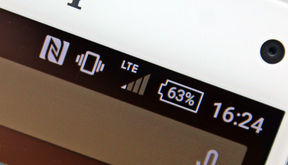Several popular smart phones fail to reach normal Internet speeds
at fail to reach adequate speeds on mobile networks.

This is shown by measurements shared by the users of Netradar, a free mobile application that measures mobile connections and devices. The impartial Netradar application is developed and run globally by Aalto University in Finland.
Android phones like Sony Ericsson Xperia Acro S and Xperia S, Samsung Galaxy Xcover and S Plus, LG Optimus L7, Nokia X, ZTE Blade III, Huawei Ideos X5 or HTC Desire S or Android tablets like Samsung Galaxy Tab 7 are among the slowest mobile devices. The iPhone 4 and iPad 2 are clearly slower than newer Apple devices and often contribute to the speed bottleneck. Out of the most popular smart phones based on the Windows Phone, the Nokia 610 and ZTE Tania have very limited download speeds. Old Symbian phones are also limited in performance.
At the moment, the mobile device market is very polarized. Out of the 150 most commonly used mobile phones, half are 4G/LTE devices that can reach at least 95 Mbit download speeds over mobile networks. Yet, about one fourth of the popular devices cannot reach 10 Mbit. A 10 Mbit download speed enables reasonably fast Internet services and smooth HD video streams. The remaining one fourth can give up to 20 Mbit download speeds, the upper limit of 3G networks.
”Quite often ordinary smart phone users fail to reach proper speeds. A device that was bought and considered fast few years ago, but also brand new devices, can contribute to the speed bottleneck. People often expect that it is the operator’s fault if the Internet connection is bad, but the device can also be the problem”, says professor Jukka Manner, who leads the Netradar development team at Aalto University in Finland.
“If a consumer wants to use fast mobile Internet, almost any LTE device is up to the job, provided that LTE is available in the area and there is no speed limitation in the data plan. The fastest mobile Internet speeds are all achieved using LTE”, continues professor Manner.
The results are based on speed measurements shared by mobile phone users using Netradar, a free mobile application to measure mobile connections and devices, available for all smart phones and tablets. When using the application, users are presented with data about the quality of their connectivity. Simultaneously, this data is uploaded anonymously to the Netradar database.
The free Netradar app measures devices and mobile network quality in terms of download and upload speed, latency and signal strength, network problems and the performance of individual brands of smartphones and tablets. Mobile device users can download the Netradar app for Android, iOS, Windows Phone, Blackberry, Nokia X, Meego, Symbian and Jolla/Sailfish. Maps of mobile Internet speeds measured all around the world are displayed at www.netradar.org Netradar mobile network maps can also be viewed at http://www.internetsociety.org/netradar.
So far, the Netradar app has been installed over 220,000 times. The database currently holds almost 6 million measurements from all around the globe.
For more information:
Professor Jukka Manner, Aalto University
Email: [email protected]
Phone: +358 50 511 2973
Netradar: http://www.netradar.org/
Internet Society: http://www.internetsociety.org/
Application at stores:
https://play.google.com/store/apps/details?id=org.netradar.netradar
http://www.windowsphone.com/en-us/store/app/netradar/4f706422-37be-490a-b46a-b08a8f14811e
- Published:
- Updated:
Read more news

Get to know us: Associate Professor Maria Sammalkorpi
Sammalkorpi received her doctorate from Helsinki University of Technology 2004. After her defence, she has worked as a researcher at the Universities of Princeton, Yale and Aalto.
Aalto computer scientists in ICML 2024
Computer scientists in ICML 2024
Getting bacteria into line
Physicists use magnetic fields to manipulate bacterial behaviour